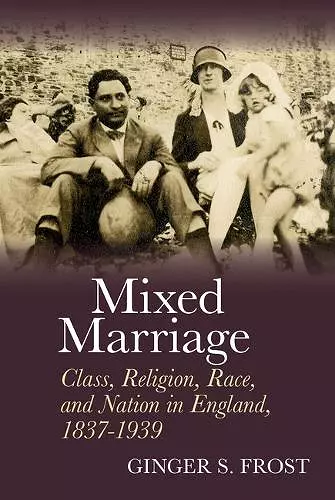Mixed Marriage
Class, Religion, Race, and Nation in England, 1837-1939
Format:Hardback
Publisher:Liverpool University Press
Published:2nd Feb '24
Currently unavailable, and unfortunately no date known when it will be back

Ebook available to libraries exclusively as part of the JSTOR Path to Open initiative.
This book is a study of the social and legal consequences of mixed marriage in England by class, religion, race, and nationality between 1837 and 1939. Using a wide variety of sources, such as government documents, marital litigation, poor-law records, and autobiographies, it explores the reaction of the family, neighbourhood, and state to those who chose exogamous matches.
The major factor in these marriages was gender. Wives did the emotional work to overcome divisions, and they also had more legal problems than husbands over property, divorce, and custody of children. Wives who would not or could not adjust to differences exposed the gendered power relations normally hidden in the fiction of separate spheres. Such spouses included wives who had more property than their husbands, those who refused to convert to their husbands’ religions, and those who could not adapt to a foreign country
Timing was also crucial. Class and religion were bigger factors in the nineteenth century, while race and nationality were more prominent in the twentieth. During economic downturns or war, mixed families could face hostility, but this was not invariable. In poor neighbourhoods, especially, acceptance was the norm, with blending of religions, races, and nations common. Overall, England had a long history of welcoming immigrants that blunted some of the prejudices also common to this age.
ISBN: 9781802073638
Dimensions: unknown
Weight: unknown
304 pages